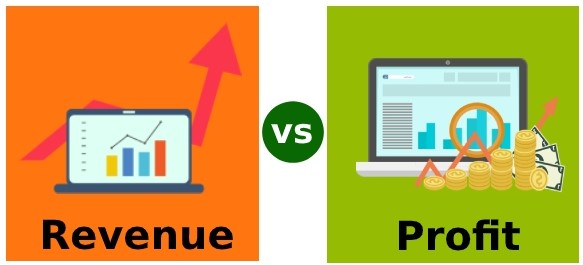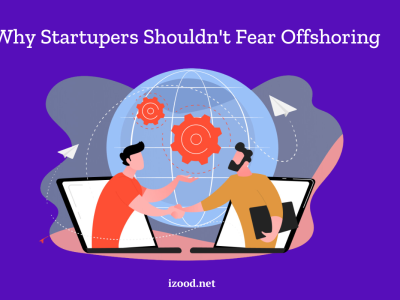
Many abbreviations and terminologies have saturated the science of economics. Either as a student of the economy or as an investor, these principles need to be exactly understood. Two subjects are more tangible for economists and non-professional people: “profit” and “revenue.”

How can we differentiate these two items from each other? In this article, you are going to learn about these topics;
- The profit definition in business
- The revenue definition in business
- What is revenue vs profit?
- Profit vs Revenue comparison details
- Examples of profit vs revenue
What is Profit in Business?
Academically, profit is defined as the financial benefit exceeding total expenses in a particular period (e.g., annually or five years). The earned profit will be funneled back to the business owners, and the percentage of their received gain will be measured by their role and the amount of investment in a business cycle. The business owners can be a combination of people who pocket the cash, stockholders, and investors of the company.
In 99% of cases, new companies have to expend a lot of budget without any measurable profit. This is true because they have to establish the first foundation and towers of their business “castle,” which requires massive time, energy, and liquidity. The break-even point (BEP) is the time event when your revenue and the expenses are the same. At this specific level, there is no profit or loss; you are therefore breaking even. BEP now will tell you how many products or services you have to sell in order to surpass your costs and be in profit.
What is Revenue in Business?
The next item any boy or girl washes to have tons of it is revenue. In the world of companies, revenue (also known as “income” or “Sales”) is the total amount of money brought in by a company’s operations, measured over a set amount of time. In other words, revenue is the value of all sales of goods and services recognized by your company before the process of extracting costs and expenses.
Your company’s revenue will form the basis of your business’s efficacy and its expansion power. Whenever you extract the total expenses and employees’ salaries from your revenue, you will get the level of “profit” or “net income.”
Revenue vs Profit, What Is More Important?
Profit is a portion of revenue that remains for the company after listing all possible charges in a specific period, so they are not fully separated. By default, the profit of a business can never exceed its revenue, and if it happens, this can be a clue of indirect, extra investment or bad news for the owners, a hint of tax fraud, or money laundering.
As mentioned earlier, most companies cannot be in profit in the first years of their business life. Therefore, you should focus more on your selling rate or gross income when you have decided to execute a new financial. The years after establishing your corporation’s position among rivals, it is time to manage your expenses to provide a balance for raising your profit level.
Example of Revenue vs Profit
Let’s start with some examples to answer the question “what is revenue vs profit” more practically.
Nokia was the first telecommunications company that reigns the global mobile phone markets in many countries. By the end of 2021, Nokia has announced total annual revenue of 22.202 billion euros. This means Nokia has sold a combination of products and services valued at more than 22 billion euros in one year (2021). Now when we come to net income or profit, Nokia has reached a total amount of 330 million euros.
What can we understand from this? The first tip of the revenue vs profit comparison is patience. Nokia started its journey of manufacturing electronic products in the mid-70s and mobile phones in the late 90s. Nokia is the world’s third-largest network equipment manufacturer despite losing most of its markets to Samsung and Chinese corporations. However, only 1.5 percent of their annual revenue remains as “profit” by the end of the calendar.
The Ford Company, one of three car manufacturing emperors in the United States, is the next example of our profit vs. revenue competition. By the end of 2021, Ford has reached a rising 136.3 billion dollars in annual revenue. Nevertheless, their total profit that year was only 17.9 billion USD, meaning they have paid more than 118 billion dollars in employees’ salaries, insurance, R&D laboratories, operating costs, and to their stockholders all over the world.
Revenue vs Profit, What are their differences?
Note that we have several subtitles of profit, each for a specific resolution. For example, gross profit is defined as sales minus the cost of goods sold (COGS). The big difference between net income and gross profit is that operating costs are not calculated in gross profit.
What can we get from revenue vs gross profit? Several facts can be drawn out;
- The first difference in revenue vs profit is their origin. Revenue is mostly related to the power of your company’s marketing, but your net profit is almost associated with your ability to reduce unnecessary expenses. As you see, having high revenue is not a sign of having a high profit at all times.
- In a standard business model, profit cannot be measured as more than the revenue in a specific period. Since we have no company with 100% efficacy, there are always some leaking assets (either as the operating costs or loss) to be excluded from our gross profit.
- Your profit in the year “n” will tell you how many forfeitures your company can handle in the year “n+1.” The ocean is not always as calm as it seems on sunny days, so giant corporations should be warned about possible financial disasters, such as bankruptcy, nations’ super inflation, pandemic diseases, and military crisis.
How to Get From Revenue to Profit?
The next step in the revenue vs. profit comparison is learning how to reach profit from revenue. Five stages of calculation are needed to get our company’s profit simply;
- Start by listing your gross sales
Before anything, check your annual sales lists and measure the generated income (without recognizing given discounts and returns to the customers). Gross sales are the most fundamental data your company needs at the beginning of its appraisal.
- From gross sales to net sales
Gross sales are accurate enough to assume a different position for it in the revenue vs gross profit comparison, but not for calculations. To refine our gross sales data, several items should be deducted, for example, discounts on some products and returns that buyers receive for sending a product back to the buyer.
- Make a bridge between net sales from gross profit
We have established our net sales in the previous stage, and here we need to subtract the cost of goods sold (COGS), which is the costs directly associated with the production of your product, like raw materials and labor, from your net sales
- Extracting Earnings before Interest and Taxes (EBIT)
After calculating the gross profit, it is time to measure operating taxes and costs and subtract them from the previous data, leading to “Earnings before Interest and Taxes (EBIT).” This is the stage where you have to evaluate your cost flow, including employee salaries, legal fees, sales expenses, and marketing costs.
- The last level
By subtracting the value of any interest or taxes you incur from your EBIT, your net profit will be provided. This is the last step of our profit vs revenue journey, which is the most accurate reflection of your company’s profitability over a given period.
Summary
The trending assumption about revenue vs profit among amateur business people is to gain as much revenue as possible, regardless of how much profit remains by the end of time. Well, it seems a nice strategy for the beginning, but it will lose its value in further steps.
When we talk about profit vs revenue, we are actually a mother with her child. As a strong child is evidence of a strong mother, high-profit value cannot be reached from a poor revenue. Therefore, most small and medium companies should focus on increasing their recurring revenue. Hence, they have a bigger share of target markets, as well as a better opportunity to have a higher profit.







